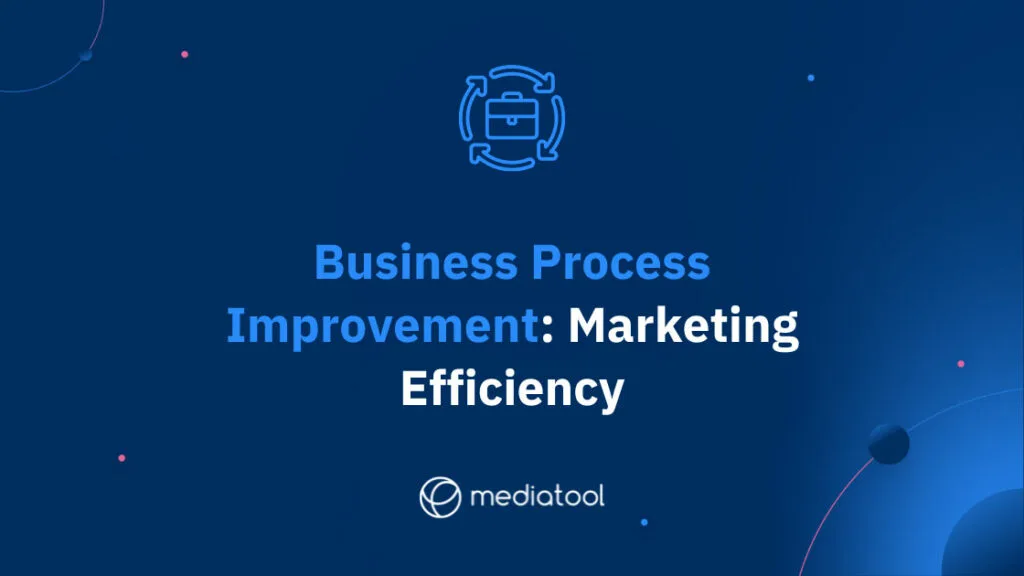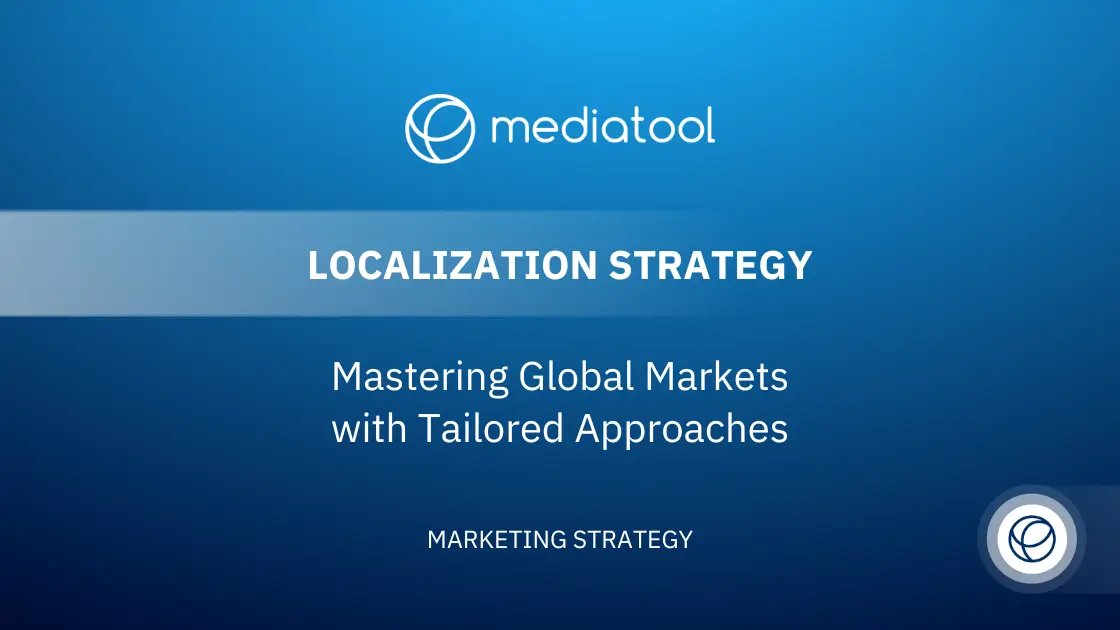Business Process Improvement. It sounds like something that’s only spoken about in boardrooms and executive meetings. But, the truth is, it affects all areas of your business, including your marketing department.
At its core, business process improvement streamlines processes and improves efficiency. And in marketing, this means using the most efficient tools, analyzing data to make informed decisions, and streamlining communication and workflow within the department.
But is marketing efficiency THAT important for the overall success of a business? The answer is a resounding yes.
Let’s dive into how to be efficient in business through marketing.
What is Business Process Improvement (BPI)?
Business Process Improvement (BPI) refers to the strategic approach of analyzing, evaluating, and enhancing business processes in an organization to boost overall efficiency and productivity. This involves examining current processes to pinpoint areas needing refinement, implementing relevant changes, and evaluating the efficacy of these modifications.
Key concepts in BPI include:
Business Processes: Fundamental activities and tasks performed within an organization.
Business Process Management: The overarching practice of managing and optimizing business processes.
Continuous Improvement: An ongoing effort to enhance products, services, or processes.
Process Improvement: The act of making existing processes more efficient and effective.
Total Quality Management (TQM): A management approach focused on long-term success through customer satisfaction.
Customer Satisfaction: A measure of how products or services meet or surpass customer expectations.
Business Process Improvement Methodologies: Various systematic approaches to improve business processes, such as Six Sigma or Lean manufacturing.
Process Improvement Methodology: Specific methods or practices used in enhancing business processes.
Business Process Automation: The use of technology to execute recurring tasks or processes in a business where manual effort can be replaced.
Project Management: Planning, initiating, executing, controlling, and closing the work of a team to achieve specific goals.
Process Mapping: A visual representation of a process, showing the sequence of steps.
Performance Metrics: Quantitative measures used to gauge an organization’s performance in various areas.
Robotic Process Automation (RPA): The use of software robots or AI to automate repetitive tasks.
Six Sigma: A set of techniques and tools for process improvement, focusing on reducing variability and defects.
Agile Management: An iterative approach to managing projects that focus on continuous releases and incorporating customer feedback with every iteration.
Lean Manufacturing: A systematic method for waste minimization within a manufacturing system without sacrificing productivity.
Digital Automation: The use of digital technology to automate processes, reduce manual effort, and improve efficiency.
Machine Learning: A subset of AI that enables systems to automatically learn and improve from experience without being explicitly programmed.
BPI aims to enhance customer satisfaction, reduce costs, minimize waste, streamline workflows, and improve overall business performance. It involves the entire organization and requires employee training, commitment from senior management, and alignment with business goals. The ultimate objective is to create a more agile, efficient, and effective organization that meets the evolving needs of customers and the market.
How does Marketing Efficiency Impact Business Success?
Marketing, a crucial component of business processes, exerts a significant influence on an organization’s sales, customer satisfaction, brand image, and revenue. Its interconnectedness with other departments highlights its role in achieving business success through various means:
Enhanced Decision-Making through Data-Driven Insights
The marketing department, a central hub for valuable data including customer preferences and campaign analytics, plays a critical role in shaping strategic decisions. Utilizing this data for improved targeting and messaging underpins effective business process improvement. Leveraging these insights, marketing can enhance ROI and embody principles of Six Sigma methodologies, guiding the business in refining its current process and implementing necessary changes for better process performance.
Streamlined Communication and Collaborative Efforts
Efficient communication and well-organized workflows within the marketing department are pivotal in enhancing overall productivity. By establishing clear roles, employing project management software, and adopting effective workflows, marketing can align with process improvement methodologies. This efficiency fosters cross-departmental collaboration, aiding in integrating marketing strategies with other business processes like financial planning. By continuously improving and streamlining operations, the marketing department can address pain points more effectively, enhancing the efficiency of the entire team and even the entire organization.
Boosting Customer Satisfaction and Value
Efficient marketing ensures targeted, precise messaging and a user-friendly online presence, directly contributing to increased customer satisfaction and customer value. Innovative solutions in customer service, such as the application of machine learning and digital automation, exemplify continuous improvement and agile management practices. These efforts are geared towards adapting to and anticipating customer needs, a process that includes identifying and enhancing processes for better customer engagement.
Aligning Marketing Efficiency with Business Goals
Effective marketing is not just about refining existing processes within the department but also aligning these improvements with broader business objectives. This includes enhanced customer satisfaction, cost reduction, and improved business performance. Implementing business process improvement initiatives and following best practices in process mapping and project management are essential. The successful implementation of these strategies requires the involvement of all parties, from senior management to frontline employees. It’s about continuously improving, tracking progress, and adapting business processes to meet changing business needs and expectations.
Business Process Improvement Examples and Methodologies
When looking to enhance the efficiency of your marketing processes, there are several proven methodologies to consider. These approaches can help address various challenges, from underperforming social media campaigns to slow response times in customer interactions.
Six Sigma Process
Case Study: Improving Instagram Engagement for a Fashion Retailer
Imagine you’re leading a social media team at a fashion retailer and notice that your Instagram posts are not engaging as expected, leading to reduced sales and an uptick in customer complaints about response times.
Problem Identification and Six Sigma Application
With Six Sigma, a structured methodology to identify and rectify problems, you can address these issues systematically. The method consists of five phases: define, measure, analyze, improve, and control (DMAIC).
- Define: Clearly outline the problems – underperforming Instagram posts and slow response times.
- Measure: Collect data on post performance and response times.
- Analyze: Dig into the data to uncover root causes, such as outdated content strategies or insufficient team training.
- Improve: Implement targeted solutions like updating content strategies, enhancing employee training, and possibly leveraging digital automation for more efficient responses.
- Control: Continuously monitor the changes to ensure they are effective and sustainable.
Broadening the Scope: Total Quality Management (TQM) and Continuous Improvement
TQM and Continuous Improvement in Marketing Total Quality Management (TQM) can be integral in continuously improving marketing processes. TQM focuses on long-term success through customer satisfaction, involving all employees from senior management to frontline workers. This approach ties directly to enhanced process performance and customer value, ensuring that the entire team is committed to quality and efficiency.
Practical Steps:
- Process Mapping: Identify and map existing processes to pinpoint inefficiencies.
- Employee Training: Invest in training programs to equip the team with the skills needed for effective process improvements.
- Customer Feedback: Regularly gather and analyze customer feedback to align marketing strategies with customer expectations and needs.
Kaizen
After successfully applying Six Sigma to enhance your social media strategy, Kaizen can be the next step in fostering ongoing progress and improvement.
The Philosophy of Kaizen: Embracing Incremental Changes
Kaizen, a concept originating from Japan, translates to “continuous improvement.” It focuses on the power of making small, incremental changes rather than waiting for a large-scale overhaul. This philosophy is particularly effective in business process improvement, emphasizing the importance of continuous enhancements to existing processes.
Applying Kaizen in Social Media Management
Monitoring and Adapting Processes: In your ongoing social media efforts, Kaizen encourages regular monitoring of metrics to fine-tune strategies. This approach aligns with the continuous process improvement mindset, where current processes are consistently evaluated and updated.
Engaging Team Members and Customers: Gathering feedback from both team members and customers is vital. Their insights can lead to effective business process improvements, ensuring that your social media strategies resonate well with the audience and address any pain points.
Staying Informed and Agile: Keeping abreast of industry trends is crucial. This proactive stance helps in identifying new processes or technologies that could enhance efficiency, like software development tools or digital marketing tactics. By staying agile and adaptable, you can avoid missed deadlines and ensure satisfied customers.
Implementing Kaizen as a Business Process Improvement Initiative
Mapping and Adjusting Workflows: Utilize business process mapping to visualize your current social media workflow. This visual representation can help identify inefficient processes and areas where small changes can make a significant impact.
Involving All Stakeholders: Kaizen is a collaborative approach that involves all parties, from the business owner to human resources. Encourage an environment where everyone feels empowered to suggest improvements, enhancing the collective effort to refine and develop better strategies.
Tracking Progress and Results: Regularly track the progress of these incremental changes. By analyzing the impact of each modification, you can better understand what works and what doesn’t, leading to a more refined and successful social media strategy.
Lean Management
Lean management, a key business process improvement methodology, offers a strategic approach to enhance marketing efficiency by minimizing waste and maximizing resource utilization.
Streamlining Marketing Processes with Lean Principles
Eliminating Low-Value Activities: In the context of social media management, lean management targets the reduction of time-consuming, low-value tasks such as manual data entry. By identifying and eliminating these ineffective processes, resources can be redirected towards more impactful activities like creative content development.
Optimizing Budget Allocation: Lean management involves a critical review and reallocation of budgets, focusing on the most effective tactics and channels. This ensures that every dollar spent contributes to significant marketing outcomes, aligning with the overall business goals.
Implementing Lean Management Across Business Operations
Broadening the Lean Approach: While particularly effective in marketing, the principles of lean management can be applied across various business areas. This approach helps in improving operational efficiency and overall productivity, benefiting the entire organization.
Process Mapping and Change Implementation: Using tools like process maps, you can visualize the existing process flow in your marketing department and identify areas for streamlining. Implementing new processes or making process changes based on these insights can lead to a more agile and responsive marketing operation.
Continuous Monitoring and Improvement: Lean management is an ongoing effort. It involves continuously tracking progress and making adjustments as necessary. This dynamic approach ensures that marketing strategies remain effective and aligned with changing business needs and market conditions.
Collaboration and Involvement of All Parties: Successful implementation of lean management requires the involvement of all parties, from the marketing team to senior management. Encouraging a culture of continuous improvement and agility, where everyone contributes to process optimization, is crucial for sustaining long-term efficiency gains.
How to Improve Marketing Efficiency
At this point, you know the benefits and some methodologies for improving marketing efficiency. But how do you get started on optimizing your processes? Here are the five steps to implement business process improvement:
Identify Areas for Improvement
Test your current marketing processes and identify areas for improvements, such as underperforming channels or time-consuming tasks. Focus on areas where the potential impact of optimization is high, for example, a crucial channel with room for significant improvement. These areas could also be areas of pain for your team, such as a time-consuming task that causes frustration.
Consider gathering feedback from team members to get their opinions on opportunities for improvement. Those on the front lines of marketing efforts may have valuable insights and ideas.
Gather and Analyze Data Related to Those Areas
Data pinpoints where exactly the issues are and helps inform solutions. Gather relevant data, such as performance metrics for underperforming channels or time logs for inefficient tasks. This can involve using business process improvement tools, such as flowcharts and process maps, to track individual steps in a process.
Through analysis, you can point out the root causes of the issues and determine how you can address them. You may also identify additional opportunities for improvement.
Choose a Business Process Improvement Methodology
Decide on a process that aligns with your goals and resources. Consider the potential impact and resources required and determine whether you want to implement a strategic or smaller tactics-based approach or both.
For example, if you have a small team with limited resources, kaizen or lean management may be more feasible and practical than a larger-scale approach such as Six Sigma, because they focus on making minor, continual improvements rather than a big transformation. You can also consult with experts or training programs to learn about implementing a methodology.
Implement the Changes and Track Their Effectiveness
Break your improvement efforts into smaller steps and rank them based on the potential impact and resources required. Then, start implementing changes and adjustments to improve efficiency in your identified areas. Implementing changes could involve revamping your budget allocation or changing how you assign and manage tasks.
Monitoring the effectiveness of the changes is crucial to ensure that they’re improving efficiency and adjusting if necessary. Check performance metrics or conduct team check-ins to gauge satisfaction and identify any areas for improvement.
Continue Iterating and Improving
Improvement is a continual process, not a one-time effort. Regularly assess and adjust your strategy as needed, striving for improvement.
Focus on learning and staying up to date on new tools and approaches that can improve your processes. And don’t be afraid to try out new ideas, test their effectiveness, and make adjustments as necessary.
Improve Business Process Improvement & Efficiency with Mediatool
Improving business processes is a never-ending journey. Research, analyze, and iterate to strive for improvement. This process can be daunting, especially with limited resources and a busy workload.
That’s where business process improvement software like Mediatool comes in. Mediatool’s collaborative marketing platform streamlines and optimizes your marketing processes by providing a central hub for planning, executing, and analyzing campaigns. With a focus on creating impactful campaigns, Mediatool’s various features and integrations allow for efficient management of tasks, budget allocation, team collaboration, and reporting.
Take your business efficiency to the next level with Mediatool. Sign up for a free trial today.





